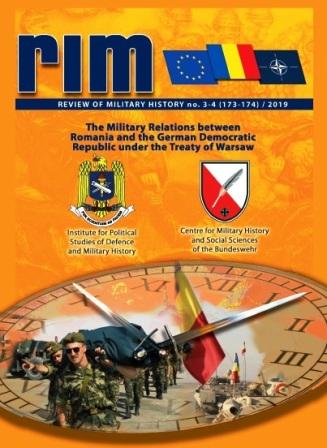The Ottoman Campaigns in Walachia, 1394-1395
The Ottoman Campaigns in Walachia, 1394-1395
Author(s): Alexandru MadgearuSubject(s): History, Military history, 13th to 14th Centuries, The Ottoman Empire
Published by: Editura Militară
Keywords: Bayezid I; Mircea; Sigismund of Luxemburg; Ottoman Empire; Walachia; Bulgaria; Dobrudja; battle of Rovine;
Summary/Abstract: The expansion of the Ottoman Empire in the northern part of the Balkan Peninsula started after the battle of Kosovopolje (15 June 1389) led to the occupation of Bulgaria in 1393 and to the first raid of the Turks in western Walachia. The voevode Mircea launched an attack against the base of those marauders (Karınovası), in the context of a larger offensive organized by Sigismund of Luxemburg. As punishment, the Ottoman army led by Sultan Bayezid I entered in Walachia in the autumn of 1394. The date of the campaign was subjected to a long controversy, but there is no strong reason to deny the date of 10 October 1394 mentioned by the Serbian annals for the battle usually called “Rovine”. The name “Rovine” was not a real placename, but a Serbian noun meaning “cliff” or “ditch”, used to describe the features of the battlefield. The location of the battle is too disputed, but it was somewhere on the route from Turnu Măgurele to Curtea de Argeş. The battle was won by Mircea, but a part of his boyars preferred to support the alliance with the Turks. Their chief, Vlad, was perhaps the son of voevode Dan I. Mircea took refuge in his Transylvanian feud, and signed a treaty of alliance with Sigismund of Luxemburg at Braşov (7 March 1395). A Hungarian army entered in Walachia in April 1395 and contributed to the liberation of the fortress Turnu (also known as Little Nicopolis), which was conquered by the Ottomans in the previous campaign. This victory of the armies of Sigismund and Mircea determined a counteroffensive of Bayezid I in May 1395. Sigismund went back to Walachia at the beginning of July to revenge the defeat. The cooperation between Mircea and Sigismund was achieved too late to obtain the defeat of the Ottoman invaders. In the autumn of 1394, Mircea was able to stop the conquest of the entire Walachia, preserving a part of it, despite the treason of Vlad. This partial preservation of power allowed the agreement of 7 March 1395, whose outcome was the expedition of the Hungarian army in April 1395. However, the Ottoman forces remained strong enough to cancel the results of this campaign, in the counteroffensive from May 1395 commanded by Bayezid I against the joined forces of Mircea and Sigismund.
Journal: Revista de istorie militară
- Issue Year: 2023
- Issue No: 3-4
- Page Range: 3-17
- Page Count: 15
- Language: English

